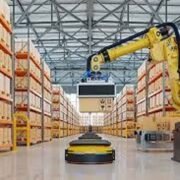Since the environment has become a global issue, there is an ever growing trend in the automotive industry to reduce emissions. Catalytic converters are important for emission control technologies and they play a major role during efforts to improve air quality. In this article : History of catalytic converters, How does a Catalytic converter work?, Catalysts in action Importance and evolution Of Catastrophic Converters Impact on air quality & Regulatory compliance.
Understanding Catalytic Converters
This component of an automobile is a catalytic converter, here we call it simply called Cat Con or The CAT which stands for the catalyst(oxidation or reduction).It converts toxicity gases and pollutants inoverused exhaustgas from Internal combustion engineIn theform less toxicity to pollutant reprocessing a redox reaction(credentials)subseteq. These metals catalyze reactions to humanities. Such metals catalyze reactions to convert carbon monoxide, CO; hydrocarbons, HC; and nitrogen oxides, NOx, into generally harmless products (carbon dioxide and water) in some cases [CO2 + H20 → N2] with the only undesired by product having a part per million in concentration at maximum.
Key Functions
A catalytic converter is a huge boost in the quest for reducing car pollution. It transforms CO, which is produced by an incomplete combustion process and toxic gas, into carbon dioxide. They also oxidize the unburned hydrocarbons that contribute most to smog and air pollution, converting them into CO2 and H2O.
Evolution of Catalytic Converter Technology

Beginning in the 1970s, catalytic converters became common features on vehicles as increasingly strict emissions laws demanded cleaner tailpipe discharges. A series of technological advancements that have occurred in the decades since along with societal demand for more efficient and sturdier converters has helped steam this dynamic unfolding. Key innovations include:
- Three-Way Catalytic Converters (TWCs):Said converters are adept at the simultaneous reduction of NOx, oxidation of CO (and hydrocarbons), so they’re excellent for gasoline engines.
- Diesel Oxidation Catalysts (DOC)s: These catalytic wraps are designed to be BY for diesel engines, oxidizing both CO and hydrocarbons while reducing PM.
- SCR (Selective Catalytic Reduction)– A urea solution is injected into the exhaust stream where it converts NOx to nitrogen and water
- Electric Catalytic Converters: The market is, more or less slowly moving towards electric and hybrid vehicle space hence the exploration of some kind of a catalytic convertor that can operate in different modes.
The Importance of Catalytic Converters
Environmental Impact
Catalytic converters play a critical role in reducing emissions from cars, resulting in improved air quality and fight against climate change. Catalytic converters can cut CO, hydrocarbon and NOx emissions by 90 percent (although as much of a few hundred), according to the U.S. Environmental Protection Agency (EPA). This makes them crucial in urban areas where vehicle emissions contribute heavily to air pollution.
Regulatory Compliance
In fact, the world governments started to carry out higher levels of standard that would allow less pollution to be proliferated. First, in the United States, on road vehicles have to meet specific limits for all sorts or pollutants and your car manufacturer. Catalytic converters are essential in order to meet these standards, and as such they have become the center of attention for policy makers trying to set tough new fuel economy regulations.
Economic Considerations
Better emissions control equates to better fuel economy, which should help consumers at the pump. Like platinum, they are extremely valuable to recycle due to their high recycling value of the precious metals used in catalytic converters.
Future Directions
And, the role of catalytic converters will change every time technology evolves. Scientists are looking into using different materials, as well as creative designs to make these devices last longer and be more energy efficient. Additionally, as electric vehicles become more mainstream the purpose may instead move to adding catalytic converters to hybrid and EV powertrains in order that emissions management is universal for all types of vehicle.
Conclusion
Catalytic converters are key elements of advanced emission control technology, as they help cut down on dangerous pollutants emitted by vehicles. This progression mirrors the automotive industry’s reaction to environmental hurdles and legislated regulations. Looking ahead to a future of cleaner air and more sustainable transport, the necessity for catalytic converters will continue to be at the forefront in our fight against inter-air pollution and climate change. Innovative solutions like these will need to continue in order for us to be able to meet the increasingly strict current and future emission standards, creating a better world that we live on but also one which can supply our path generations.








